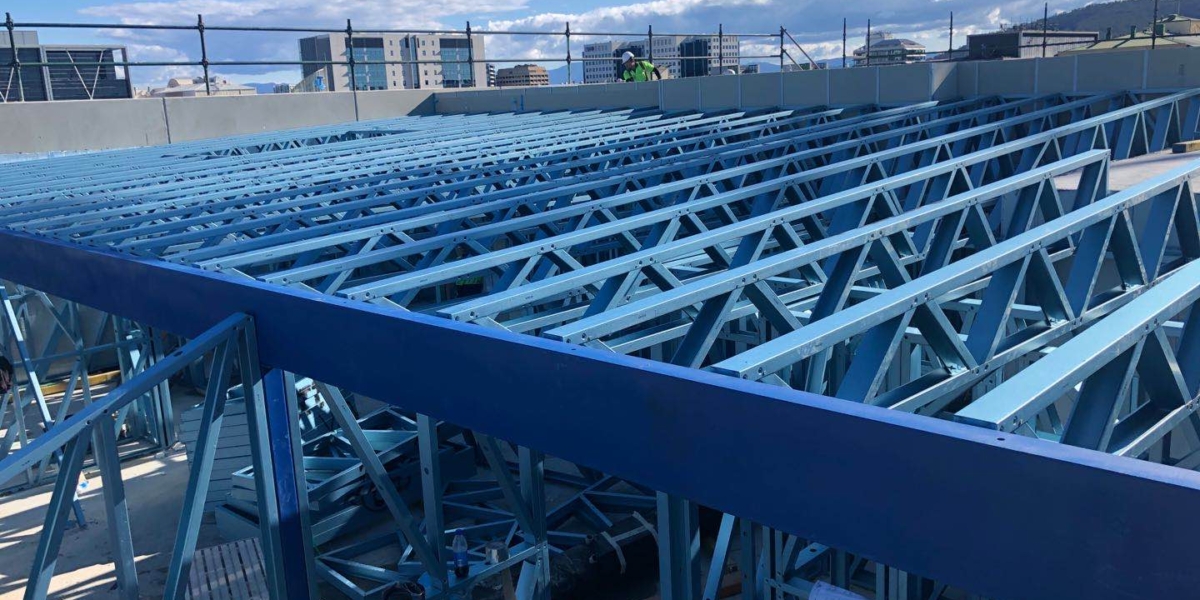The Facts when Building a Steel-Framed House
Building a Steel-Framed Home is becoming a popular option for people looking to build in Australia. Despite their increasing popularity, there are still many common misconceptions or myths about the use of steel that cause some people concern. Many people remain unconvinced about the suitability of steel structures mainly due to their limited knowledge about the product. Steel home construction offers many advantages over timber and block homes. Steel is a very strong and versatile material to build with, allowing flexibility and creativity in design, and homes with wide open living spaces. We will be taking a look at some of the common myths or misconceptions people have about Steel-Framed Homes and revealing the truth behind them!
Storms
Lightning has less effect on steel as it is a positive conductor to the ground and not released destructively within the frame of the home. Any home, including timber or block homes, are at risk of being struck by lightning and Steel-Framed Homes are at no greater risk than any other home.
Rust
Protective coatings are used on steel to protect them against corrosion. Steel Trusses Tech. manufacture with True-core Steel which has an alloy coating made of aluminium and zinc. It carries a conditional 50 year warranty against corrosion, giving you peace of mind. When the steel is cut, the galvanic action or sacrificial protection prevents corrosion of any steel exposed at cut edges.
Noise
A popular misconception that often comes up is that Steel-Framed Homes are noisy! In reality, however, this is simply not true and there have been studies to prove it! Studies conducted by CSIRO found that ‘most occupants of homes with steel frames either reported no sound emitted from the frame or said that if it did, it was not a problem’. Some people even reported that there was less noise than timber framed houses!
Strength
Steel is light but very strong! In fact, because it is so strong, it can be used instead of other materials such as hot rolled structural steel which is usually more expensive! Buildings made using True-core Steel won’t warp, twist, sag or shrink, reducing the occurrence of things such as settling cracks, doors that jam etc. Another bonus is that steel is non-combustible, so it will not burn!
Wind
All homes supplied by Steel Trusses Tech meet compliance with Australian standards for location and engineering wind loadings.
Financing
While there may be some lenders out there that will not finance Steel-Framed Homes, most lenders recognise the advantages that Steel-Framed Homes have over conventional ones. As Steel-Framed Homes become more and more popular, we should find that more and more lenders are open to providing finance.
When it comes to Steel-Framed Homes, don’t always believe what you’ve read or been told! Building a Steel-Framed Home or Kit Home offers many advantages to traditional timber or block homes, especially if you are an owner builder. If you have any questions about Steel-Framed Homes, contact us at Steel Trusses Tech Canberra.
FRAMERS, 2ND FIX CARPENTERS AND PLASTERERS
2nd fix carpenters introduction
Plasterers introduction
Trimming or cutting C-stud profiles
Hand cutting light gauge steel with tin snips
Making up noggins and studs
Electric shears and nibblers
Using templates
Screw fixing steel building frames
Mitre corners
PLUMBERS & ELECTRICIANS
Electricians introduction
Plumbers tips & tricks
Introduction to holes in steel building frames
Making holes using a Stainelec metal stud punch
Making holes using a manual hydraulic punch
Making holes using a Tungsten Carbide hole cutter
Making penetration holes using tin snips
Making penetration holes using a Tungsten Carbide hole cutter
Making penetration holes using a manual hydraulic punch







